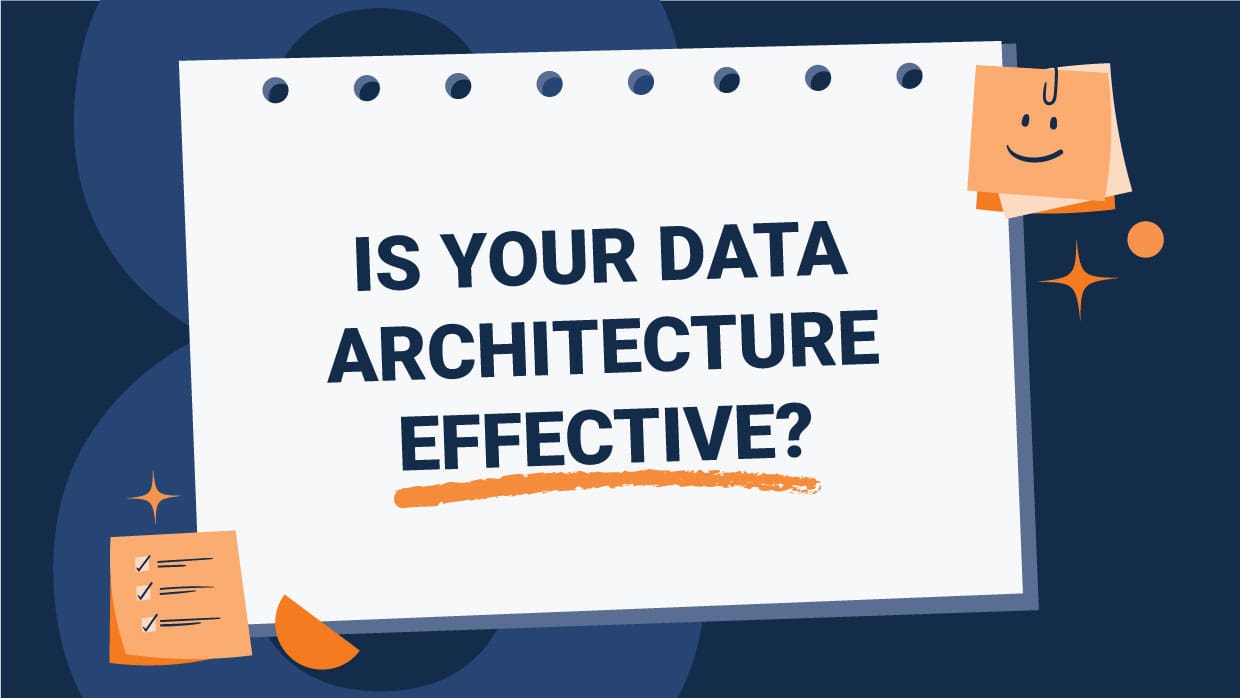2 min read
8 Check Points to Assess the Effectiveness of Your Data Architecture
Written by: TimeXtender - December 16, 2021

With the new year quickly approaching, what better time to do an assessment of your current data architecture.
To begin, ask yourself if your data architecture is efficiently and effectively supporting the goals and objectives of your company? Or, is it a relic that’s stuck in the past?
To help you determine if your data environment needs modernizing in 2022, we’ve created an 8-point check sheet.
Following are the questions to ask yourself. If you answer “yes” to any one of these questions you’re likely a candidate for a modern, automated data estate. And of course the more you answer “yes” the more the reason for you to strongly consider making the move to modernizing by automating in 2022. So let’s begin.
- Managing Documentation -- Do you need to simplify your system for managing documentation while ensuring that you’re capturing important information about your data?
- Flexibility for the Future -- Are you concerned that your enterprise data platform (s) will not be suitable for and aligned with future needs? Are you considering the most strategic path for deploying analytics data to the cloud in the near future?
- Improving Data Integration – Are you wasting a lot of time trying to connect various database types or cloud data sources? Does this effort include time spent developing, testing, or debugging these connections?
- Allocating Data Engineers’ Expertise – Do your data engineers spend way too much time developing and writing code? Do you believe that it would be more advantageous to allocate the time of your data engineers on more strategic initiatives such as data quality and business requirements?
- Optimizing Data Loading -- Are your data platforms bogged down with data integration, loading, transformation, preparation and modeling? Have you wondered if there’s a simpler, smarter way to go about these processes?
- Automating Data Transfer – Is your staff manually translating work to provide the same data to different endpoints and between multiple environments?
- No Code Simplicity – Is your organization spending countless hours manually writing code in support of your data warehouse, data lakes, or data marts? Do you have to rewrite code to meet changing requirements?
- Managing Numerous Tool Sets – Does your tech staff spend lots of time learning, managing, and updating various tools to build the components related to your data architecture?
This quick assessment is only scratching the surface. Frankly, we could go on and on with these type of assessment questions to help you determine if you need to search out a better way to manage all of your existing and future data.
If you answered “YES” to any of these questions, we have the solution for you: TimeXtender.
Our software is a world-class solution for organizations looking to modernize their data environment. Take a minute and check out how our automated data estate builder addresses each of these eight questions posed. And let’s work together to turn those “yesses” into “nos.”

